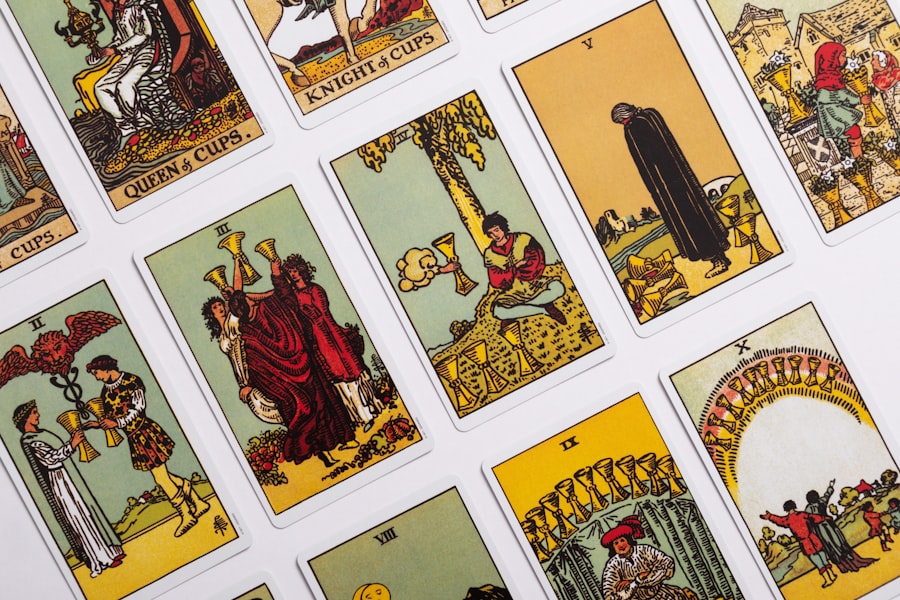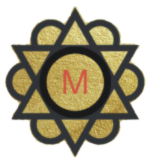
Tarot is a fascinating system of divination that has captivated individuals for centuries.
The Major Arcana comprises 22 cards that represent significant life events, spiritual lessons, and archetypal themes.
Each card in this section, from The Fool to The World, carries profound meanings and insights that can guide individuals through their personal journeys. The Minor Arcana, on the other hand, consists of 56 cards divided into four suits: Cups, Pentacles, Swords, and Wands. Each suit corresponds to different aspects of life—emotions, material concerns, intellect, and creativity, respectively.
Understanding tarot requires more than just memorizing card meanings; it involves grasping the symbolism and narratives woven into each card. For instance, The Tower card often signifies sudden upheaval or revelation, while The Star represents hope and renewal. The imagery on the cards is rich with symbolism that can evoke personal reflections and insights.
Many practitioners emphasize the importance of intuition in tarot reading; while traditional meanings provide a foundation, personal interpretations can lead to deeper understanding. This blend of structured knowledge and intuitive insight makes tarot a unique tool for self-exploration and guidance.
Key Takeaways
- Tarot is a tool for self-reflection and guidance, using a deck of cards with symbolic imagery.
- Setting clear intentions and goals is essential for using tarot for yearly planning.
- Choosing the right tarot spread, such as a yearly spread, can help organize and focus your yearly goals.
- Interpreting tarot cards for yearly guidance involves understanding the symbolism and applying it to your goals and intentions.
- Incorporating tarot into your yearly planning routine can provide ongoing insight and guidance for the year ahead.
- Reflecting and adjusting throughout the year is important for staying aligned with your goals and intentions, using tarot as a tool for guidance.
Setting Intentions and Goals for the Year
As the new year approaches, many individuals find themselves reflecting on their past experiences and contemplating their aspirations for the future. Setting intentions is a powerful practice that can help clarify what one hopes to achieve in the coming months. Intentions differ from mere goals; they are rooted in personal values and desires, often focusing on the emotional or spiritual aspects of life rather than just tangible outcomes.
For example, instead of setting a goal to lose weight, one might set an intention to cultivate self-love and body positivity. When using tarot to set intentions for the year, it can be beneficial to approach the process with mindfulness. Begin by creating a quiet space where you can reflect without distractions.
Consider drawing a few cards to gain insight into your current state of being and what areas of your life may need attention. For instance, if you draw The Empress, it may suggest a need to nurture creativity or relationships. This card could inspire an intention centered around fostering connections with loved ones or engaging in creative pursuits that bring joy.
By aligning your intentions with the insights gained from tarot, you create a more holistic approach to your yearly planning.
Choosing the Right Tarot Spread for Yearly Planning

Selecting an appropriate tarot spread is crucial for effective yearly planning. A tarot spread is essentially a layout of cards that provides structure to the reading and helps focus on specific questions or themes. For yearly planning, many practitioners favor spreads that offer a comprehensive overview of the year ahead.
One popular option is the “Year Ahead” spread, which typically involves drawing twelve cards—one for each month of the year. This spread allows individuals to gain insights into potential challenges and opportunities that may arise throughout the year. Another effective spread is the “Wheel of the Year” layout, which aligns with seasonal changes and can provide guidance on how to navigate different phases of the year.
This spread often includes cards representing each season—spring, summer, autumn, and winter—along with additional cards for key events or themes. By choosing a spread that resonates with your personal style and goals, you create a framework that enhances your understanding of the year ahead. The act of laying out the cards also serves as a ritualistic practice that can deepen your connection to the tarot and your intentions.
Interpreting the Cards for Yearly Guidance
Once you have drawn your cards using your chosen spread, the next step is interpretation. This process involves analyzing each card’s meaning in relation to its position within the spread and how it connects to your overall intentions for the year. For example, if you draw The Chariot in the position representing July, it may indicate a period of determination and forward momentum during that month.
This card often symbolizes triumph over obstacles through willpower and focus, suggesting that July could be a time for taking decisive action toward your goals. Additionally, consider how the cards interact with one another. If you draw The Lovers alongside The Tower in your spread, it may suggest that significant changes in relationships could occur this year—perhaps leading to deeper connections or necessary separations.
Pay attention to recurring themes or symbols across multiple cards; these can provide valuable insights into overarching trends for your year. Engaging with the imagery and symbolism of each card allows for a richer interpretation that goes beyond surface-level meanings.
Incorporating Tarot into Your Yearly Planning Routine
Integrating tarot into your yearly planning routine can enhance your self-awareness and decision-making processes throughout the year. One effective way to do this is by establishing a regular practice where you revisit your yearly spread at key intervals—such as at the start of each month or season. This allows you to reflect on how the energies represented by each card are manifesting in your life and whether adjustments are needed in your approach to your goals.
In addition to monthly check-ins, consider journaling about your experiences related to each card drawn in your yearly spread. Documenting your thoughts and feelings can help clarify how specific events align with the guidance provided by the tarot.
By actively engaging with tarot as part of your planning routine, you create a dynamic relationship with the cards that evolves alongside your journey.
Reflecting and Adjusting Throughout the Year

As the year progresses, it is essential to remain flexible and open to change. Life is inherently unpredictable, and circumstances may shift in ways that require reevaluation of your goals and intentions. Regular reflection is key to staying aligned with your aspirations while also being responsive to new opportunities or challenges that arise.
Consider setting aside time at the end of each month or season to review your progress and assess how well you are adhering to your intentions. During these reflection sessions, revisit your original tarot spread and compare it with your current experiences. Are there cards that resonate more strongly now than they did at the beginning of the year?
Have any unexpected events occurred that shifted your perspective? Engaging with these questions can lead to valuable insights about how you can adjust your plans moving forward. For example, if you initially set an intention focused on career advancement but find yourself drawn toward creative pursuits instead, allow yourself the freedom to pivot in response to this newfound passion.
Incorporating tarot into your yearly planning process not only provides guidance but also fosters a deeper connection with yourself and your evolving journey. By understanding the basics of tarot, setting meaningful intentions, choosing appropriate spreads, interpreting cards thoughtfully, integrating tarot into your routine, and reflecting regularly throughout the year, you create a comprehensive framework for personal growth and fulfillment. This dynamic relationship with tarot empowers you to navigate life’s complexities with clarity and purpose as you move through each season of the year.
If you are interested in delving deeper into the symbolism of tarot cards, you may want to check out The Meaning and Symbolism of the Tarot Card The Sun. This article explores the significance of The Sun card in tarot readings and how it can influence your year ahead. Understanding the different meanings behind each card can provide valuable insights into your life and help you make informed decisions for the future.
FAQs
What is Tarot?
Tarot is a form of divination that uses a deck of cards to gain insight into past, present, and future events. The deck typically consists of 78 cards, each with its own symbolism and meaning.
How can Tarot be used to plan the year ahead?
Tarot can be used to plan the year ahead by providing guidance and insight into potential opportunities, challenges, and areas of focus for the upcoming year. It can help individuals set intentions, make decisions, and navigate the year with a sense of direction and purpose.
What are some common Tarot spreads for planning the year ahead?
Some common Tarot spreads for planning the year ahead include the New Year spread, the 12-month spread, and the Wheel of the Year spread. These spreads can provide a comprehensive overview of the year, including themes, challenges, and opportunities for each month.
How can someone learn to use Tarot for planning the year ahead?
Learning to use Tarot for planning the year ahead involves familiarizing oneself with the meanings of the cards, practicing different spreads, and developing intuition. There are many resources available, including books, online courses, and workshops, to help individuals learn and deepen their understanding of Tarot.
Is Tarot a reliable tool for planning the year ahead?
The reliability of Tarot as a tool for planning the year ahead ultimately depends on the individual’s belief in its efficacy. While some people find Tarot to be a valuable and insightful tool, others may not resonate with its symbolism and interpretations. It is important for individuals to approach Tarot with an open mind and use it as a tool for reflection and guidance rather than a definitive prediction of the future.






